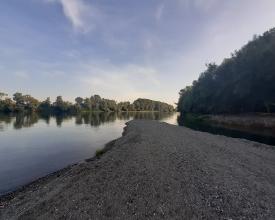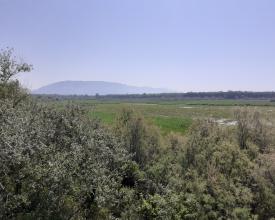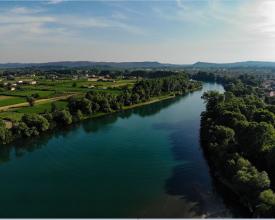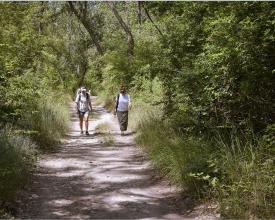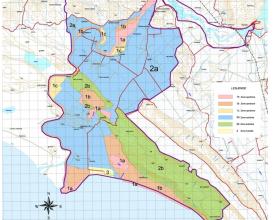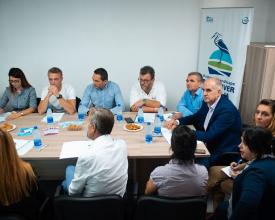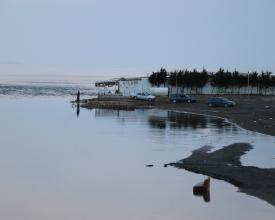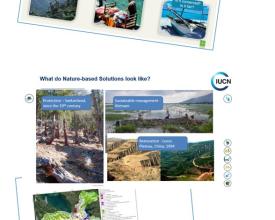
Building PA Management Capacity in the Buna Protected Landscape
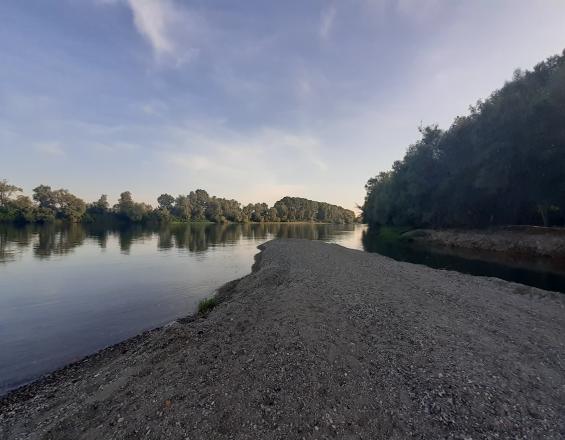
The Buna River Velipoje Protected Landscape (BRVPL), in north-western Albania, spans over 20,000 hectares and encompasses the mouth of Drini River, the lagoon of Viluni, Buna River, and the gulf of Drini running alongside the Adriatic Sea. The protected landscape is designated as a Category V protected area, and under the Ramsar Convention as a wetland of international importance. The landscape is an important Bird and Plant Area, as it is home of threatened endemic bird and plant species. It is an important migration corridor of species between the Adriatic Sea and inland areas during migration season.
The protected area was declared in 2005, however at that time local authorities did not have adequate capacity or an appropriate governance structure to manage the area to required standards. The solution is to initiate a governance structure, and analyse and increase capacity of protected area managers.
Context
Challenges addressed
The Buna River Velipoje Protected Landscape was designated as a protected are in 2005, as a means to preserve it's flora, fauna and landscapes. The designation was a strong acknowledgement of the natural values, however this is the first step in protection and preservation.
The next important steps of creating a strong governance structure and management planning were not followed immediately, and destructive processes have continued, alongside a lack of effective management.
The management body struggled with a series of issues - funding, knowledge of management strategies and ecological restoration techniques and community support.
Location
Process
Summary of the process
These building blocks are very closely linked. Although the capacity assessment and mid term review can be undertaken separately, the implementation of recommendations through a development program is critical for change and improvement.
The training program also must be informed by some analysis in order to address the most important issues and barriers to management success of a protected area.
Building Blocks
Developing a management plan
For the first ten years after protected area designation, the management authority was in place but operating without a management plan. They did not have the internal capacity or knowledge to develop a plan that addressed the requirements for management of a protected landscape.
The management plan was developed to provide the objectives, activities and indicators for measuring the outcomes. The plan included a ten year program of activities, with opportunity for a review and amendments after five years.
Enabling factors
1. Funding
2. Engaged authorities and land managers, who can provide input
3. Skilled staff or consultants to develop plan
Lesson learned
The most important part of developing a management plan was to find the balance between providing a plan to lift this burden from authorities, yet ensuring land managers and decision makers have input to ensure it is realistic and supported.
In the case of Buna, there was initially not enough consultation or input from the authorities. The activity plan that aimed to lead to success proved unachievable with the capacity and resources available locally to implement.
Creating Management Committee
Although there was a managing agency, the governance structure needed broader formal input, especially for a decision making mechanism.
So a management committee, including the management authority, a water authority, local government, community representatives and regional government was initiated.
The management committee has a chair, who has the responsibility to convene regular contact and meetings, and also special meetings to address issues or make decisions on management as the requirement emerges.
Enabling factors
1. Active authorities and stakeholders, who are committed to participating fully
2. Provision of a terms of reference, for guidance
Lesson learned
The main difficulty in the case of Buna was to have the management committee operating independently. In phase 1 of the project, the committee was first convened and the expectation was that it would operate proactively. However, it had to be revisited and re-convened in phase 2 by the NGOs, whereas we had hoped it would be functioning without outside encouragement.
Mid term review - management effectiveness assessment and capacity analysis
The mid term review examined the success of management plan in the middle of its implementation period. It reviewed the implementation progress of the action plan and the effectiveness of the outcomes. A detailed analysis of capacity for implementation and protected area management was carried out, as this would always be a major challenge. The analyses included extensive engagement with authorities and land managers, to gain open feedback. They provided feedback on the challenges and their resources, knowledge and experience, including where they fell short to achieve implementation. They also had the opportunity to suggest how we could better capacitate them for the remainder of the implementation period.
Enabling factors
1. Engaged authorities and land managers, who are open to giving clear feedback and self-assessment
2. Skilled staff or consultants to undertake review and engage well with authorities
Lesson learned
The main lesson learned was that this process should have been undertaken to the same extent when developing the management plan, to make it more realistic.
Training program
Based on the management effectiveness and capacity assessment, a training program was developed and delivered to assist in filling knowledge and capacity gaps.
The program included:
- protected area management global standards
- flora and fauna ID and monitoring
- improving protected area visitor experience
- media and communications training
- GIS and mapping
- restoration of specific natural habitats
- Management planning and standards
- Climate change threats and adaptation
- sustainable fishing
Some equipment was provided, mostly to help with visibility, monitoring and mobility in the protected landscape.
Additionally, Montenegrin authorities were invited to sessions to share knowledge and promote cross-border cooperation, and we arranged a study tour in Spain for Albanian staff to visit an experienced yet comparable protected area in Europe to learn and share practical knowledge between teams.
Enabling factors
1. Funding
2. Capable and knwledgeable trainers
3. Resources to convert skills and knowledge into change on the ground
Lesson learned
It is important to create a blend of sessions that the staff request and those that are assessed as technically most important for successful management.
A mix of practical and theoretical is also important.
Impacts
The most direct positive impact resulting from the interventions is improved ecological condition, habitat and species conservation in the protected area. This results from the improved governance for decision making, on-ground management and efficiency of resource usage. This is a long term impact that must be measured over many years.
In the shorter term, the capacity and capability of the staff is improved, and they have some additional equipment to perform their work to a higher standard. Their knowledge allows them to have greater satisfaction from work and efficiency, plus the staff directly involved in public visitation of the protected landscape provide a better experience, which increases interest and tourism.
The formation of the management committee ensures that the perspective and requirements of all local authorities and key stakeholders is included in steering the management. It also provides a clear contact for outside organisations to approach with and concerns or opportunities.
Beneficiaries
The management committee for BRVPL, the management authority of the protected landscape, and visitors to/supporters of the protected area.
